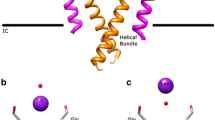Abstract.
Acylphosphatase is one of the smallest enzymes known (about 98 amino acid residues). It is present in organs and tissues of vertebrate species as two isoenzymes sharing over 55% of sequence homology; these appear highly conserved in differing species. The two isoenzymes can be involved in a number of physiological processes, though their effective biological function is not still certain. The solution and crystal structures of different isoenzymes are known, revealing a close packed protein with a fold similar to that shown by other phosphate-bind ing proteins. The structural data, together with an extended site-directed mutagenesis investigation, led to the identification of the residues involved in enzyme catalysis. However, it appears unlikely that these residues are able to perform the full catalytic cycle: a substrate-assisted catalytic mechanism has therefore been proposed, in which the phosphate moiety of the substrate could act as a nucleophile activating the catalytic water molecule.
Similar content being viewed by others
Author information
Authors and Affiliations
Additional information
Received 12 November 1996; accepted 27 November 1996
Rights and permissions
About this article
Cite this article
Stefani, M., Taddei, N. & Ramponi, G. Insights into acylphosphatase structure and catalytic mechanism. CMLS, Cell. mol. life. sci. 53, 141–151 (1997). https://doi.org/10.1007/PL00000585
Issue Date:
DOI: https://doi.org/10.1007/PL00000585




